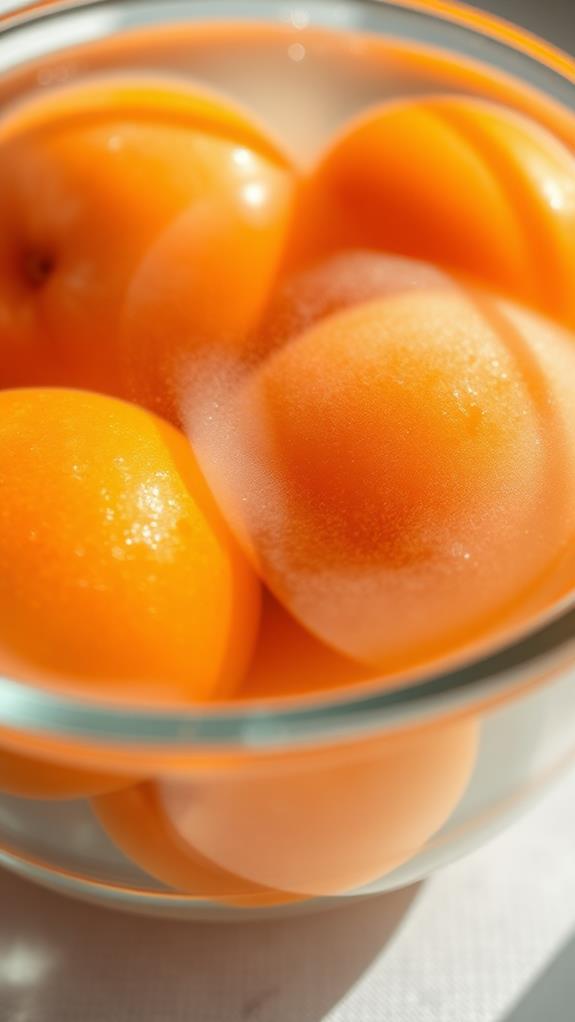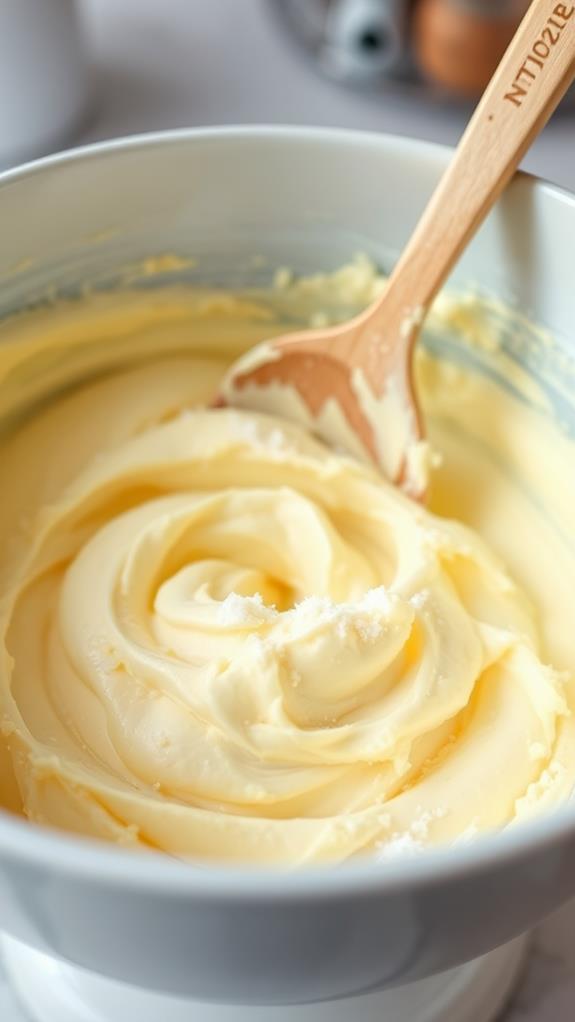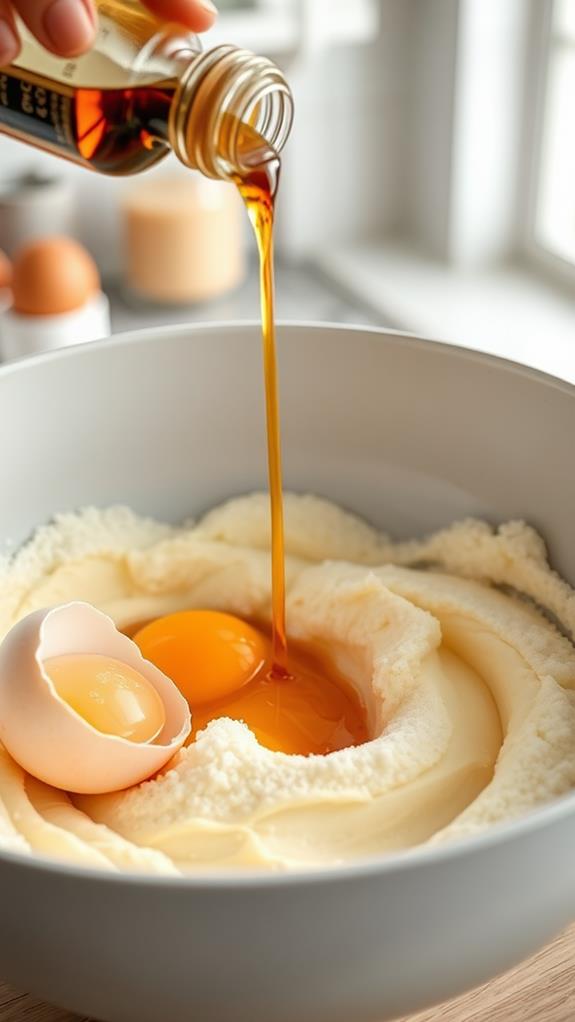Apricot Cake Recipe

You've likely tasted many cakes, but have you ever tried baking your own apricot cake? This recipe combines simplicity with a burst of flavor, making it perfect for any skill level. You'll start by soaking dried apricots, which infuses them with just the right amount of moisture. As you cream butter and sugar, the kitchen fills with a comforting aroma, hinting at the deliciousness to come. Imagine the golden crust and moist crumb that await. But what's the secret to achieving that perfect balance? Let's explore the steps and techniques that make this cake truly unforgettable.
Recipe
Apricot cake is a delicious treat that combines the sweetness of apricots with the moist texture of a well-made cake. This recipe is perfect for any occasion, whether you're serving it as a simple dessert or as an elegant addition to a special celebration. The apricots provide a natural sweetness and a hint of tartness that complements the richness of the cake, creating a delightful flavor balance.
With its golden-brown crust and tender crumb, this cake isn't only tasty but also visually inviting, making it a great choice for entertaining guests or enjoying a peaceful moment with a cup of tea.
The recipe is straightforward and suitable for both seasoned bakers and beginners. By following these steps, you'll have a scrumptious cake that fills your home with the warm aroma of baked apricots. The cake pairs wonderfully with vanilla ice cream or whipped cream, enhancing its flavors and making it a versatile option for various gatherings.
Below are the ingredients you'll need to create this delectable apricot cake.
Ingredients:
- 1 cup dried apricots
- 1 cup boiling water
- 1 1/2 cups all-purpose flour
- 1 teaspoon baking powder
- 1/2 teaspoon baking soda
- 1/4 teaspoon salt
- 1/2 cup unsalted butter, softened
- 1 cup granulated sugar
- 2 large eggs
- 1 teaspoon vanilla extract
- 1/2 cup sour cream
- 1/4 cup milk
To make the apricot cake, start by preheating your oven to 350°F (175°C) and greasing a 9-inch round cake pan. Soak the dried apricots in boiling water for about 10 minutes to plump them up, then drain and chop into small pieces.
In a medium bowl, whisk together the flour, baking powder, baking soda, and salt. In a separate large bowl, cream the butter and sugar until light and fluffy. Add the eggs one at a time, beating well after each addition, followed by the vanilla extract.
Gradually blend the dry ingredients into the wet mixture, alternating with the sour cream and milk, until the batter is smooth. Finally, gently fold in the chopped apricots. Pour the batter into the prepared cake pan and bake for 30-35 minutes, or until a toothpick inserted in the center comes out clean. Allow the cake to cool in the pan for a few minutes before transferring it to a wire rack to cool completely.
For the best results, verify all ingredients are at room temperature before you begin, as it helps the batter combine more evenly and results in a better texture. If you desire a more intense apricot flavor, consider adding a tablespoon of apricot jam to the batter.
You can also sprinkle powdered sugar on top of the cooled cake for extra sweetness and presentation. Enjoy your homemade apricot cake with a warm beverage for a perfect pairing.
Cooking Steps
Let's kick off your apricot cake adventure by preheating your oven to a toasty 350°F—because no one likes an underbaked cake, right?
While your oven warms up, give those apricots a nice hot bath in boiling water for about 10 minutes; it's like a spa day for them, and they'll soften up beautifully.
Once they're relaxed, chop them finely, and then get ready to cream the butter and sugar until they're as fluffy as a cloud before adding in the eggs and a splash of vanilla extract for that sweet aroma.
Step 1. Preheat Oven to 350°F

Before you begin mixing the ingredients, preheat your oven to 350°F (175°C) to guarantee it's at the right temperature when you're ready to bake. This step might seem like a minor detail, but it's essential for a perfectly baked apricot cake.
While the oven's warming up, you can imagine it's a cozy little cocoon, preparing to transform your mixture into a delightful treat. Make sure your oven rack is in the center position for even baking.
Remember, an oven thermometer is your best friend if you want precision—no surprises, just deliciousness! If you're tempted to skip this step, resist! You don't want to end up with an undercooked center or an overcooked edge.
Happy baking, and enjoy the aromatic rewards!
Step 2. Soak Apricots in Boiling Water

Your apricot cake's flavor journey begins with plumping up the dried apricots. Start by placing them in a bowl, then pour a cup of boiling water over them.
It's like giving those apricots a warm spa treatment they didn't know they needed! Let them soak for about 10 minutes.
This step is essential because it transforms them from chewy nuggets into juicy bites that melt into your cake. You'll know they're ready when they've swelled up and look like they've just returned from a tropical vacation.
Don't skip this part, or you might end up with apricot pebbles instead of pieces. Remember, the more love you give to these apricots now, the more they'll repay you in flavor later!
Step 3. Chop Softened Apricots Finely

Once your apricots have been nicely softened, it's time to chop them finely.
Grab a sharp knife and a sturdy cutting board—don't worry, you've got this! Place the apricots on the board, and with a steady hand, start slicing them into small pieces. Aim for uniformity; you want each piece to blend seamlessly into the cake batter.
If your knife skills are a bit rusty, no worries—just take your time and enjoy the process. Think of it as a zen moment in your baking adventure.
As you chop, the apricot's sweet aroma will tease your senses, making you excited for that first delicious bite.
Step 4. Cream Butter and Sugar

To begin the creaming process, take the softened unsalted butter and granulated sugar and place them in a large mixing bowl.
Grab your trusty hand mixer or stand mixer, and start on a low speed to avoid that dreaded sugar shower. Gradually increase the speed to medium, letting the magic happen.
You're aiming for a light, fluffy texture that resembles a cloud—if clouds were deliciously buttery, that is. This might take about 3-5 minutes, so don't rush it! If your arms start to feel like jelly, just think of it as a mini workout.
Step 5. Add Eggs, Vanilla Extract

Now that your butter and sugar are perfectly creamed, it's time to add the eggs and vanilla extract.
Crack the eggs one at a time, making certain each is fully blended before moving to the next. This step guarantees the batter stays smooth and lump-free. Adding two eggs gives the cake its rich texture, so don't skip this part, even if you're tempted!
Next, pour in that fragrant teaspoon of vanilla extract. It's like the secret handshake for cake flavors, adding an extra layer of deliciousness.
Mix until everything's well combined, and the batter's color turns a lovely pale yellow. This is where the magic begins, so don't rush—take a moment to appreciate your culinary handiwork!
Final Thoughts
With your apricot cake freshly baked and the aroma still lingering, it's time to savor the fruits of your labor.
You've crafted a dessert that combines the sweet and tangy essence of apricots with a soft, moist crumb.
Take a moment to admire your creation, perhaps even snapping a photo before diving in.
Now, the best part: tasting it! Pair your slice with a scoop of ice cream or a dollop of whipped cream for an extra treat.
Remember, baking is as much about joy as it's about precision, so enjoy every bite.
And hey, if a little piece somehow disappears before serving, your secret's safe here.
You've earned this delicious reward for your efforts in the kitchen!
Frequently Asked Questions
Can I Use Fresh Apricots Instead of Dried?
Yes, you can use fresh apricots instead of dried ones. Just chop them into small pieces and reduce the added liquid slightly, since fresh apricots have more moisture. This swap will give a fresher, juicier flavor.
What Can I Substitute for Sour Cream?
You can substitute sour cream with an equal amount of plain yogurt or Greek yogurt. If you don't have yogurt, use buttermilk or a blend of milk and lemon juice to maintain the cake's moist texture.
How Should I Store Leftover Apricot Cake?
Store leftover apricot cake in an airtight container at room temperature for up to two days. For longer storage, wrap it tightly in plastic wrap and foil, then freeze it. Thaw the cake at room temperature before serving.
Can I Make This Cake Gluten-Free?
You can make this cake gluten-free by substituting all-purpose flour with a gluten-free flour blend. Guarantee it's a 1:1 ratio replacement for best results. Verify all other ingredients are gluten-free to prevent cross-contamination.
What Is the Best Way to Reheat Apricot Cake?
To reheat apricot cake, preheat your oven to 300°F. Wrap the cake in aluminum foil to retain moisture, then heat for 10-15 minutes. Don't use a microwave; it can make the cake dry and rubbery.
Conclusion
And there you have it, your delicious apricot cake is ready to enjoy! This delightful treat, with its sweet and tangy flavors, is sure to impress anyone lucky enough to get a slice. Remember, serving it warm with a scoop of vanilla ice cream or a dollop of whipped cream takes it to the next level. So, pat yourself on the back, grab a fork, and dig in—after all, you've earned it with your baking prowess!






